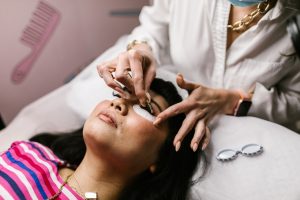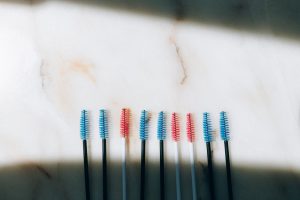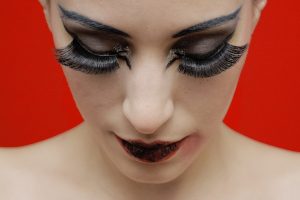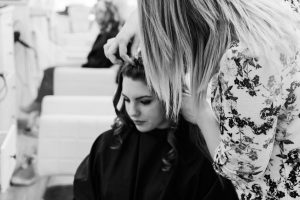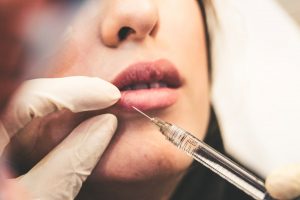6 Alternatives to Eyebrow Microblading
They say “beauty requires sacrifice”, which perfectly describes eyebrow microblading. This is a painful and rather expensive beauty procedure giving you beautiful eyebrows for the long haul. It’s also known as eyebrow tattoos since the process is very similar to the tatouage.
Many may look for alternatives to microblading for various reasons. If you’re among them, you came to the right place. Below I’m sharing the top alternatives to microblading that’ll make your eyebrows always look on fleek.
So, let’s get started, shall we?
Table of Content
What Is Microblading?
Microblading is simply the process of drawing eyebrows with an electric tool similar to the one used for making tattoos. The artist makes blade scratches with semi-permanent ink that resembles natural eyebrow hair.
This procedure allows filling in the shallow areas in the eyebrow in a way that looks completely natural. This method is not only used for filling in thinning brows but also to draw new eyebrows if the person has no hair in that area.
The results look all-natural due to the realistic thin hair-like pigmented scratches. The procedure provides semi-permanent results that can last more or less than 18 months. The results are individual, based on the skin type. For instance, microblading effects may last shorter when a person has oily skin.
Is microblading painful?
Despite the similarities in application techniques between tattoo and microblading, the pain level is not the same at all. Most describe it as rather bearable than painful.
It’s often described as more like a discomfort since the process takes up to two hours. However, people have different pain tolerance levels, so for some, it can be bearable, but for others, it can be quite painful.
Usually, experts apply numbing cream before the procedure to make it hurt less. However, the healing process can still be painful since there are thin cuts on the skin.
According to Healthline, these tips can make the healing process less painful.
- Apply coconut oil to the microbladed area.
- Avoid applying makeup since it can irritate the skin.
- Keep the microbladed area dry. Don’t apply anything, including essences and serums, toners, masks, and even water.
- Make sure not to sweat.
- Stay away from direct sunlight.
- Don’t touch or rub the area.
Now that we know enough about microblading, let’s see what disadvantages it can have.
Disadvantages of microblading
Although microblading provides a stunning look to your brows, there are some pitfalls you should be aware of.
Skin irritation and allergies. Microblading should be a sterile process; otherwise, it can cause infections and irritation.
Long healing process. Microblading requires long and complex aftercare. You should avoid anything that can touch the brows, including sweat, makeup, creams, and so on.
Many unqualified “professionals” on the market. Microblading is a common process nowadays, and its popularity has a downside as well. There are too many incompetent masters that claim to be professionals. However, their work makes us hope for the better. So, before choosing microblading, I’d recommend doing careful research to find a qualified professional who will not mess up your brows.
Now, let’s see what alternatives to microblading you can look for.
6 Alternatives to Microblading in 2022
Microblading may not be for everyone. Hence many people look for substitutes that provide similar results but cost less, are safer and less painful. Check out the below list of the top alternatives to microblading.
1. Brow lamination
Brow lamination is probably the most popular and safe alternative to microblading. It doesn’t involve needles or other tools since it’s a painless perming procedure that provides neat brows for up to 6 weeks.
Brow lamination fixes hair in shape and provides a fuller appearance. In addition, you can get your brows tinted as well – this provides a more defined look. The brow master uses special chemical products for the treatment. The process lasts from 40 minutes up to an hour, depending on whether you get the tinting or not.
You can see all the steps of the procedure in this video, where the master shows the brow lamination process from start to finish:
First, she glues down the hair to fix the brows in the desired shape, then adds a few layers of chemical solutions and keeps brushing out the brows throughout the process. She also uses a tint to boost the color of the brows.
Brow lamination has a number of pros and cons, which you can see below.
Pros:
- Long-lasting result.
- Painless procedure.
- It has a nourishing effect on the brows.
Cons:
- The only thing you should be careful about with brow lamination is to keep it dry for 24 hours after the procedure.
Now, let’s see what microshading is and how it differs from microblading.
2. Microshading
Microshading is quite similar to microblading since both procedures use needles for the process. However, with microblading, the master adds strokes of ink, while in microshading, they add dots. As a result, brows look like they are filled out with a pencil.
Microshading is a long-lasting, waterproof alternative to microblading that can last from one to three years, depending on your skin type. You may want to get a touch-up every six to eight months. As for the process, it consists of two sessions.
During the first session, which can last up to two hours, the master shapes your brows, selects the right colors, and adds the first layer of ink. After eight weeks, when the brows heal, you need to go for the second session for the perfecting procedure.
You can see the full process of microshading in this video:
Firstly, the master draws the desired brow shape with a pencil, then she goes over the drawing with a needle roller and applies the ink.
Below I’ve listed some of the pros and cons of microshading.
Pros:
- Long-lasting, it can last up to three years with proper care.
- Provides a powdery, dense appearance to the brows.
Cons:
- It’s semi-permanent, and although it can last long, this is definitely not the best option if you’re looking for a permanent solution.
- It is a painful process since it includes needles.
- Doesn’t look as natural.
The next in line are ombre brows, another common alternative to microblading.
3. Ombre brows
Ombre brows are similar to microshading. However, this procedure follows a color gradient – it’s darker on the tail of the brow and gets lighter, gradually creating the ombre look.
This is a semi-permanent procedure that can last from one to three years, with touch-ups every six to eight months.
I’d like to share a video where you can see the entire process of making ombre brows:
The master marks the desired shape of the brows and then starts applying the ink with a needle going in and out of the skin quickly. The process is quite similar to tattooing.
Check out the pros and cons of ombre brows below.
Pros:
- Can last from one to three years with proper care.
- The ombre effect provides a more natural look to the brows.
Cons:
- The process is painful since it includes a needle.
- It’s semi-permanent and requires touch-ups every 6-8 months.
Moving on to the most natural alternative to microblading that doesn’t involve needles.
4. Henna
If you want to have nice eyebrows without getting a tattoo, henna brows are a perfect choice. This is the most natural-looking and simple treatment for eyebrows. The results last up to 6 weeks maximum, so it might not work for those who are looking for longer effects.
However, the process lasts only 30 minutes, and, as demonstrated in this video, it’s pretty simple and doesn’t require much preparation:
The master cleans your brows, then applies the henna solution. After five minutes, she removes the henna from the top parts for an ombre effect, and after another five minutes, she cleans the entire product, and that’s it.
Here are some pros and cons of this microblading alternative.
Pros:
- Completely painless process, without needles.
- The process takes only thirty minutes.
- Provides a very natural look to the brows.
Cons:
- It doesn’t last long. You need to redo it in 6 months.
- If you want to keep it longer, then you need to avoid touching your brows during any skin care procedures, including dermaplaning, chemical peels, masks, etc.
- It lasts even less if you have oily skin.
Let’s move on to one of the trendiest brow looks among Instagram influencers – powder brow.
5. Powder brows
This option, by far, is the most popular choice lately. As the name implies, this procedure provides a powdery look to the brows, as if they’re filled in with makeup. Compared to microblading, it’s better for people with oily skin because, with microblading on oily skin, the lines don’t look that smooth, but powder brows look perfect on any skin type.
The process of application is pretty similar to ombre brows. As you can see from this video, the brow master draws out the ideal shape of the eyebrows and then starts tattooing with a thin needle:
Check out the benefits and drawbacks of powder brows in the list below.
Pros:
- Provides minimal injury to the skin compared to other eyebrow tattoos.
- It’s suitable for every type of skin.
Cons:
- The application process is painful. However, compared to other brow tattoos, this technique applies ink with dots, so the pain is quite tolerable.
- It lasts only 1.5-2 years, depending on the skin type.
Moving on to the last and my personal favorite alternative – nanoblading.
6. Nanoblading
Nanoblading usually confuses people the most since it’s pretty similar to microblading. Well, it actually is similar, but the main difference is the application technique.
While for microblading, the brow master uses a scratching technique to create strokes, in nanoblading, they draw strokes with a regular tattoo technique. This process doesn’t provide as much injury to the skin as microblading.
This procedure enhances the brows and lasts longer than microblading. It can last up to three years.
I found a video that perfectly demonstrates the nanoblading process:
It shows how the master prepares the brows and draws all the hair strokes before starting tattooing. Once satisfied with the look, she starts applying the ink to the skin with the tiny needle.
Nanoblading has several pros and cons, which you can see below.
Pros:
- Provides a fuller look to the brows.
- The results last long, up to three years.
- The first touch-up is required after a year or year and a half.
- The nanoblading tool is more flexible and allows creating customized brow looks for every individual.
Cons:
- The process is painful because, technically, it’s a tattoo.
- The color fades faster on oily skin, so regular touch-ups may be required.
- Can sometimes cause allergic reactions; that’s why I’d always recommend getting a patch test in advance.
To me, personally, nanoblading is the winner since it looks more natural, lasts longer, and the application process is a bit more gentle than with microblading.
Conclusion
And that’s a wrap!
Those were the top six alternatives to microblade eyebrows. I’m sure everyone will be able to find the one that best suits their taste, budget, and pain tolerance.
If you’re looking for an alternative that doesn’t include needles, then brow lamination and henna are perfect options; however, they don’t last that long. But if you’re ready to take the pain of needles and need semi-permanent solutions, then nanoblading, microshading, or ombre brows will do the job perfectly.
Did you like my article? Check out my blog, where I constantly share insightful articles on beauty, skincare, fashion, and a lot more.


